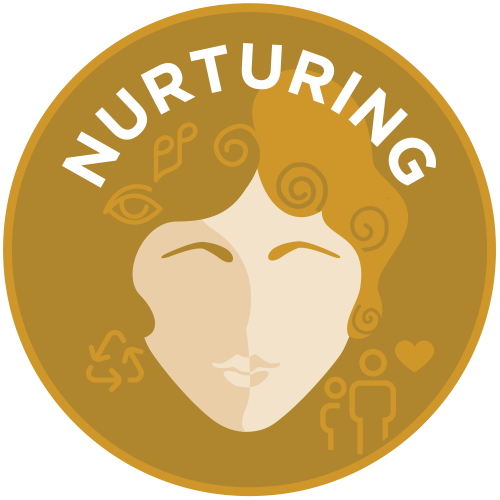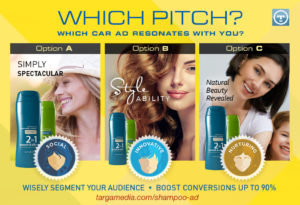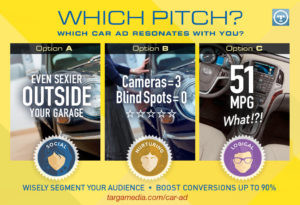
Marketers, Don’t Reinvent in 2019, Just Recommit

Jason Steed
Owner & CEO
Marketers, Don’t Reinvent in 2019, Just Recommit
Good News…your 2019 marketing strategy can leverage a lot of what you did last year. In short, don’t reinvent, just recommit. I’m not saying to be complacent or stagnant. Did you stagnate last year? Of course not, you applied ingenuity and creativity to real business challenges, and you acted with decisiveness to unforeseen bumps in the road. Yeah, just do more of that again this year. I’m serious. Here’s why…
In this article I address the all too common abandonment of core marketing messaging that will weaken brand equity. “Out with the old, in with the new?” Sounds alluring, but it’s often lousy in practice.
A company whose slogan is “You ain’t seen nothin’ yet” could be more accurately revised to “Nothin’ to see here.”
Your company’s brand equity is much more vast than your logo or latest slogan. It’s more vast than last quarter’s successful campaign, or the new technology wave you’re riding. Your brand equity is defined by how your target audience perceives you, and trying to reset perception on an annual basis is both difficult and dangerous. If you’re a moving target, you’ll weaken brand equity. A company whose slogan is “You ain’t seen nothin’ yet” could be more accurately revised to “Nothin’ to see here.”
And, true, it doesn’t sound too sexy at first glance, but modeling 2019 on your past collective efforts could very well lead to a stronger identity and boosted customer loyalty.
Remember back in the 2012 and 2016 election seasons when the term “experience” was interchangeable with “old and corrupt establishment?” Ouch! It’s true, though, we all wanted something shiny, because it felt that fresh blood was the best antidote to the broken systems and tragedies we had inherited. But now that we’re older and wiser…well actually, we still want something shiny. But what do we all keep coming back to? We inevitably come back to predictable and dependable things and people in our lives. It’s even more in our nature to feel secure, understood, and valuable. The same is true with the brands we respect and the products we use. It’s true for the public face of companies and services we’re attracted to. And it’s true for the marketing campaigns we’re creating.

Let’s look at McDonalds Restaurant as a case study (because everybody else does). People who choose to eat at McDonalds do so because they know exactly what they’re going to get. They recall the smells, textures, sights and tastes from past Value Meals. Picture that it’s lunch time, and you’re entertaining out-of-town guests. Between destinations you scan food options along your route. You’re looking for “shiny” but it’s very illusive, because ultimately “experience” wins out. And I get it, you would never impress your guests at McDonalds. But that’s not the point. Your final dining selection will almost always be based on familiarity. It’s how we’re wired. Our brains take immense joy in keeping us alive and well. And if we survived yesterday (congratulations) then our brains deduce that we simply must repeat yesterday’s actions, thoughts, emotions, and habits to ensure the same outcome. To varying degrees, our brains don’t really like shiny things. Our desire and ability to try something new is driven in large part by our personality type, as well as memory of past experiences, social influence, and other circumstances.
Shininess Factor for your
Socially-minded Customer
Your customers with socially-minded buying behaviors often seek perpetual education and learning. Present them with bite-sized news and ideas so they can easily share them within their social circles. Your socially-driven customers have a loyal following because they present fun new ideas in “familiar” ways. We don’t actually want to follow the pioneers who might take arrows in their backs. We’re hardwired for safety and security, with a hint of curiosity.

Shininess Factor for your Nurturing-minded Customer
You’re well served by those customers who are nurturing-minded because they earn high respect with many of your future customers. Nurturers are realistic, down to earth, genuine, and very intuitive. They look for meaningful benefits in your product, free from exaggerations or puffery. Nurturers see the shine in the long-standing values from your product. They see intrinsic value in your consistent brand and message. Nurturers are buffers. They bring out the shine for others to see.

Time, Attention and Sunlight
Time, attention, and sunlight are good and all, but what if you’re trying to fix marketing derailments? Or what if you’re pretty sure last year’s marketing tactics didn’t serve you well? Maybe you focused on price when you should’ve focused on value? Or too much on new customers and not enough on existing clientele. Same old same old? Stay the course? Of course not. We marketers call this a marketing pivot (okay, I just made that term up). This involves a re-focus, not a re-direction. All too often a situation looks destined for failure when in fact you’re creating a much needed baseline for smart decisions that will follow. Campaigns require time to mature (I’m working on another article dedicated to this topic.) Yep, time and attention…and plenty of sunlight. Sunlight refers to getting your solutions out of your computer and office, and in front of your people.
Several months ago my marketing director, Bob Stockwell, and I were in a meeting with the CTO of Utah Tech Council. Bob used a great analogy about following through with a marketing campaign. Much like traveling along the interstate, you anticipate open lanes, account for merging traffic, and jockey for a position. I compare these factors with using real-time data for lane and speed changes, but not as grounds for exit ramps or emergency stops. I’m a big fan of real-time marketing feedback, but I’ve seen good companies dwindle and fail by being “reactive” instead of “proactive.” Yet another tragic case of shiny distractions leading to weakened brand equity.
As you implement your 2019 marketing plans, I’m not encouraging you do the same things this year as last year. After all, we yearn to improve and innovate, and we encourage others to do the same. New opportunities will present themselves. No two chess games are ever the same. Assuredly, the tools you use this year will be a bit shinier than last year. But your motivations and strategies should look a lot like what you’ve done in past years. A new year is a great opportunity to recommit, to get fired up, and to meet new challenges with better resolve. .






